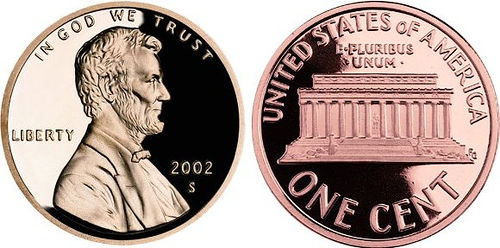Kim Peek, the basis for Dustin Hoffman’s character in the film Rain Man, has memorized 9,600 books.
“Gruesomely Bad Taste”
Critics pan great art:
- Moby Dick: “Raving and rhapsodizing in chapter after chapter … sheer moonstruck lunacy.” (London Morning Chronicle)
- Rigoletto: “The weakest work of Verdi. It lacks melody. This opera has hardly any chance of being kept in the repertoire.” (La Gazette Musicale de Paris)
- Cezanne’s paintings: “He chooses to daub paint on a canvas and spread it around with a comb or a toothbrush. This process produces landscapes, marines, still lifes, portraits … if he is lucky. The procedure somewhat recalls the designs that schoolchildren make by squeezing the heads of flies between the folds of a sheet of paper.” (Le Petit Parisien)
- Prokofiev’s Piano Concerto No. 1: “The concerto will never be played by anyone on earth. … Prokofiev wouldn’t grant an encore. The Russian heart may be a dark place, but its capacity for mercy is infinite.” (The New York Times)
- Buster Keaton’s The General: “A mixture of cast iron and jelly.” (The New York Times)
- Alfred Hitchcock’s Vertigo: “Pursues its theme of false identity with such plodding persistence that by the time the climactic cat is let out of the bag, the audience has long since had kittens.” (Saturday Review)
Henry Fielding wrote, “Now, in reality, the world have paid too great a compliment to critics, and have imagined them to be men of much greater profundity then they really are.”
Mass Transit

Moscow has the most heavily used metro system in the world, carrying 8-9 million passengers on a normal weekday. It has 170 stations and 12 lines, including an unusual “ring line” that circles the city.
According to legend, this came about when Stalin’s coffee cup left a ring on one of the blueprints. Historians dispute this account — but on maps, the ring line is always printed in brown.
Amazon Dot Com
Famous tall women:
- Janet Reno – 6’3″
- Venus Williams – 6’1″
- Ann Coulter – 6′
- Geena Davis – 6′
- Allison Janney – 6′
- Elle MacPherson – 6′
- Brooke Shields – 6′
- Uma Thurman – 6′
- Tyra Banks – 5’11”
- Famke Janssen – 5’11”
- Anna Nicole Smith – 5’11”
- Sigourney Weaver – 5’11”
- Naomi Campbell – 5’10”
- Diana, Princess of Wales – 5’10”
- Jenna Elfman – 5’10”
- Daryl Hannah – 5’10”
- Queen Latifah – 5’10”
- Charlize Theron – 5’10”
- Liv Tyler – 5’10”
- Serena Williams – 5’10”
In a Word
aegrotat
n. a note excusing a student’s sickness
Two-Faced Politicians
Until 1999, Abe Lincoln was the only person to appear on both the front and back of the same United States coin (he’s just barely visible on the back of the penny, sitting in his memorial):

Now George Washington can claim the same honor with the release of New Jersey state quarter, whose reverse shows him crossing the Delaware River:

Jerry!
More than 70 percent of Seinfeld episodes contain a reference to Superman.
Unquote
“I remember Tallulah [Bankhead] telling of going into a public ladies’ room and discovering there was no toilet tissue. She looked underneath the booth and said to the lady in the next stall, ‘I beg your pardon, do you happen to have any toilet tissue in there?’ The lady said no. So Tallulah said, ‘Well, then, dahling, do you have two fives for a ten?'” — Ethel Merman
Geronimo!

The United States sees 1 parachuting fatality per 80,000 jumps. “There are old jumpers and there are bold jumpers,” says a maxim, “but there are no old, bold jumpers.”
Going Once …
The five most expensive items sold on eBay (as of 2002):
- A Grumman Gulfstream II jet (sold for $4.9 million)
- A 1909 Honus Wagner baseball card ($1.65 million)
- Diamond Lake Resort in western Kentucky ($1.2 million)
- Shoeless Joe Jackson’s “Black Betsy” baseball bat ($577,610)
- A round of golf with Tiger Woods ($425,000)
An anonymous seller from Brazil once offered a decommissioned aircraft carrier. There were no takers.
